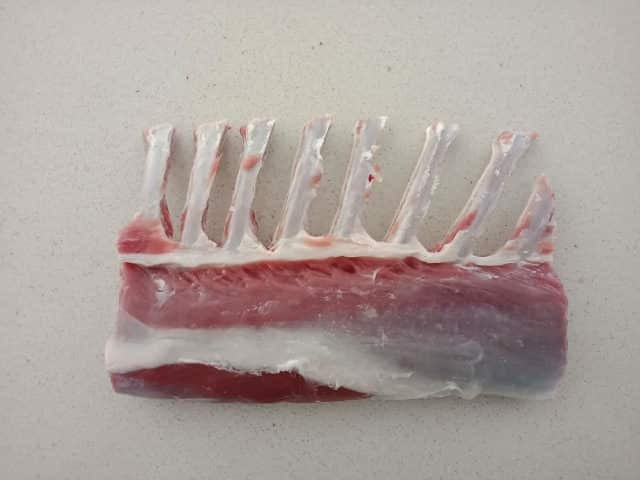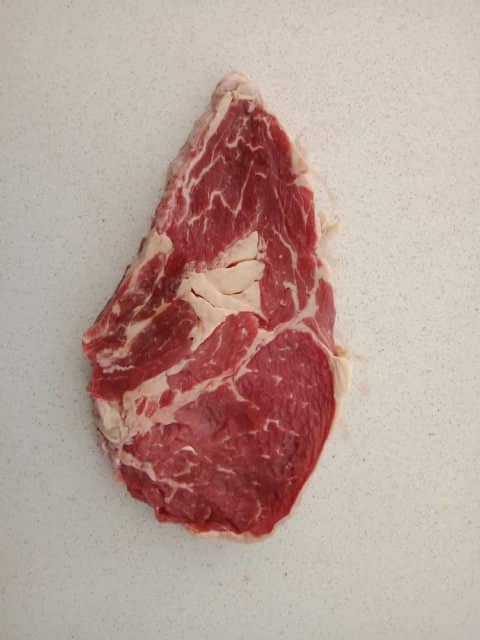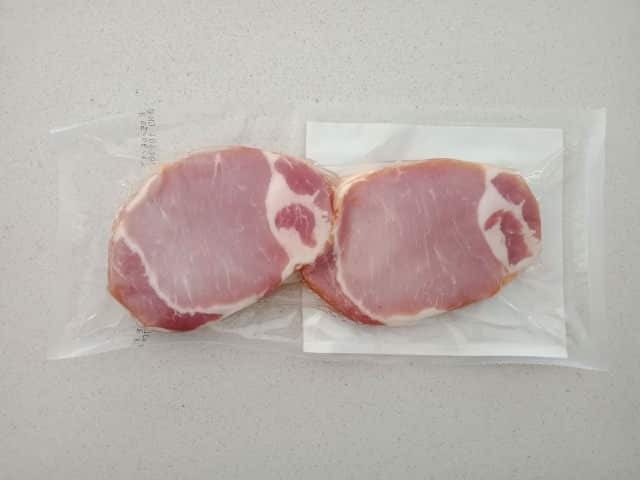Main menu
Common skin conditions

NEWS
Join DermNet PRO
Read more
Quick links
Tick bite-induced red meat allergy — extra information
Tick bite-induced red meat allergy
Author: Roy Spires, Medical Student, University of Auckland, Auckland, New Zealand. DermNet Editor in Chief: Adjunct A/Prof Amanda Oakley, Dermatologist, Hamilton, New Zealand. Copy edited by Gus Mitchell/Maria McGivern. June 2019.
Introduction
Demographics
Causes
Clinical features
Complications
Diagnosis
Differential diagnoses
Treatment
Outcome
What is tick bite-induced red meat allergy?
Tick bite-induced red meat allergy is an allergy to the carbohydrate galactose-alpha-1,3-galactose (also known as alpha-gal), which is present in both tick bite saliva and red meat [1]. Tick bite-induced red meat allergy is also called alpha-gal allergy.
Sensitisation to alpha-gal follows a bite from particular species of tick. Subsequently, eating red meat may result in itching, urticaria, angioedema, gastrointestinal upset, and rarely, anaphylaxis [2].
Red meat

Lamb

Beef

Pork
Who gets tick bite-induced red meat allergy?
The incidence of tick bite-induced red meat allergy is unknown [1]. It is associated with a history of tick bites, atopy, and cat ownership [3]. Multiple tick bites increase the risk.
The allergy arises in people exposed to the ticks due to geographic location or occupation. For example, forestry service employees and hunters in certain countries are at higher risk of carrying alpha-gal‐specific immunoglobulin E (IgE) and developing red meat allergy compared to the general population in the same region [4].
Patients with systemic mastocytosis are at a greater risk of severe reaction due to their much larger mast cell load, and as such are more likely to present to their healthcare provider.
What causes tick bite-induced red meat allergy?
The details of how a tick bite leads to allergic reactions to red meat and other substances are not completely understood.
The species of ticks that cause alpha-gal allergy include:
- The lone star tick (Amblyomma americanum) found in the United States
- The castor bean tick (Ixodes ricinus) found in Europe
- The paralysis tick (Ixodes holocyclus) found in Australia
- The hard tick species Ixodes (Endopalpiger) australiensis, found in Australia
- An unknown tick species found in South Africa and other regions [6].
The tick injects saliva containing alpha-gal into the skin of its victim. Sensitisation to alpha-gal is associated with the development of specific IgE antibodies to the carbohydrate. The component of alpha-gal that causes sensitisation is not known [7].
The symptoms of the subsequent reaction to red meat are typical of most food allergies, except that the reaction is delayed by several hours and the antigen is a carbohydrate in the meat rather than a protein. More severe reactions can occur in people exposed to multiple tick bites.
Red meat is defined as all meats obtained from mammals and includes beef, pork, and lamb. The meat is red because of the high concentrations of myoglobin, a protein that transports oxygen to the muscles. Meat obtained from birds, such as chicken or turkey, is white meat and lacks alpha-gal so does not generate an allergic response.
Other substances can cause the same allergic response, including:
- Anticoagulants and bioprosthetic heart valves made from pig intestines contain alpha-gal
- Cetuximab (an anti-cancer drug), a chimeric mouse and human monoclonal antibody that contains alpha-gal
- Intravenous fluid replacements that contain gelatine may cause reactions in individuals sensitised to alpha-gal [8]
- Alpha-gal in gelatine, milk, whipped cream, and cheese can also elicit an allergic response [8].
What are the clinical features of tick bite-induced red meat allergy?
The delayed allergic reaction that follows is typical of food allergy, except that symptoms begin 3–8 hours after ingestion of red meat, whereas other food allergies occur within minutes of exposure to the allergen [1].
Symptoms include:
- Nasal symptoms such as allergic rhinitis, sinusitis and sneezing
- Eye symptoms such as allergic conjunctivitis
- Gastrointestinal tract symptoms such as abdominal pain, bloating, vomiting, and diarrhoea
- Cutaneous symptoms such as urticaria, angioedema [2,9].
On rare occasions, anaphylaxis can occur.
What are the complications of tick bite-induced red meat allergy?
The main complication of tick bite-induced red meat allergy is anaphylaxis, which can be life-threatening.
Anaphylaxis signs and symptoms include airway constriction, swelling of the throat, a severe drop in blood pressure, a high pulse rate, and dizziness.
How is tick bite-induced red meat allergy diagnosed?
Patients often self-diagnose alpha-gal allergy by using online sources of information, oral food challenges, and logical reasoning [10].
The most accurate method of diagnosing tick bite-induced allergy is by testing for IgE titres against the alpha-gal molecule. However, the high cost and lack of availability of this test limit its use [11].
IgE-associated food allergies are usually tested for by skin prick testing. The protocol and accuracy of the skin prick test for alpha-gal allergy are debated, as delayed reactions and false-negative results are reported [7].
What is the differential diagnosis for tick bite induced red meat allergy?
The differential diagnosis for tick bite-induced red meat allergy includes other forms of allergy, especially food allergy.
The differential diagnosis for anaphylaxis includes:
- Septic shock
- Severe asthma attack
- An acute exacerbation of chronic obstructive pulmonary disease
- Hereditary angioedema [12].
What is the treatment for tick bite-induced red meat allergy?
The prevention of tick bites is paramount through both using insect repellents and avoiding forested areas.
People with tick bite-induced red meat allergy should avoid red meat and other substances with alpha-gal.
The treatment of the allergic response includes antihistamines, oral steroids, and, in the case of anaphylaxis, adrenaline.
The use of desensitisation by exposing the patient to large amounts of alpha-gal is undergoing investigation [12].
What is the outcome for tick bite-induced red meat allergy?
Limited information indicates that alpha-gal allergy may recede over time, as long as the person is not bitten by another tick. The recovery period has been reported to take between 8 months and 5 years.
References
- Commins S, Platts-Mills T. Delayed anaphylaxis to red meat in patients with IgE specific for galactose alpha-1,3-galactose (alpha-gal). Curr Allergy Asthma Rep 2012; 13: 72–77. DOI: 10.1007/s11882-012-0315-y. PubMed Central
- Viracor-IBT Laboratories. Viracor-IBT Laboratories launches the first assay to identify a new type of delayed, IgE-based allergic reaction to certain meats. Press release. 13 September 2010. Available at: www.viracor-eurofins.com/about-us/newsroom/news-items/viracor-ibt-laboratories-launches-the-first-assay-to-identify-a-new-type-of-delayed-ige-based-allergic-reaction-to-certain-meats/ (accessed 29 April 2019).
- Gonzalez-Quintela A, Dam Laursen A, Vidal C, Skaaby T, Gude F, Linneberg A. IgE antibodies to alpha-gal in the general adult population: relationship with tick bites, atopy, and cat ownership. Clin Exp Allergy 2014; 44: 1061–8. DOI:10.1111/cea.12326. PubMed
- Fischer J, Lupberger E, Hebsaker J, et al. Prevalence of type I sensitization to alpha-gal in forest service employees and hunters. Allergy 2017; 72: 1540–7. DOI: 10.1111/all.13156. PubMed
- Roenneberg S, Böhner A, Brockow K, et al. α-Gal — a new clue for anaphylaxis in mastocytosis. J Allergy Clin Immunol Pract 2016; 4: 531–2. DOI: 10.1016/j.jaip.2015.11.027. PubMed
- Steinke J, Platts-Mills T, Commins S. The alpha-gal story: lessons learned from connecting the dots. J Allergy Clin Immunol 2015; 135: 589–96. DOI: 10.1016/j.jaci.2014.12.1947. PubMed
- Krishna N, Krishna S, Krishna R. P112 Correlation between clinical findings and laboratory tests for alpha-gal sensitivity. Ann Allergy Asthma Immunol 2017; 119: S37. DOI: 10.1016/j.anai.2017.08.136. Journal
- Mullins R, James H, Platts-Mills T, Commins S. Relationship between red meat allergy and sensitization to gelatin and galactose-α-1,3-galactose. J Allergy Clin Immunol 2012; 129: 1334–42. DOI: 10.1016/j.jaci.2012.02.038. PubMed
- Rusznak C, Davies R. ABC of allergies. Diagnosing allergy. BMJ 1998; 316: 686–9. DOI: 10.1136/bmj.316.7132.686. PubMed
- Flaherty M, Kaplan S, Jerath M. Diagnosis of life-threatening alpha-gal food allergy appears to be patient driven. J Prim Care Community Health 2017; 8: 345–8. DOI: 10.1177/2150131917705714. PubMed
- Commins S, Platts-Mills T. Tick bites and red meat allergy. Curr Opin Allergy Clin Immunol 2013; 13: 354–9. DOI: 10.1097/ACI.0b013e3283624560. PubMed
- Unal D, Coskun R, Demir S, Gelincik A, Colakoglu B, Buyukozturk S. Successful beef desensitization in 2 adult patients with a delayed-type reaction to red meat. J Allergy Clin Immunol Pract 2017; 5: 502–3. DOI: 10.1016/j.jaip.2016.12.008. PubMed
On DermNet
Other websites
- Alpha-gal syndrome: symptoms and causes — Mayo Clinic
- Alpha-gal allergy — US Centers for Disease Control and Prevention
